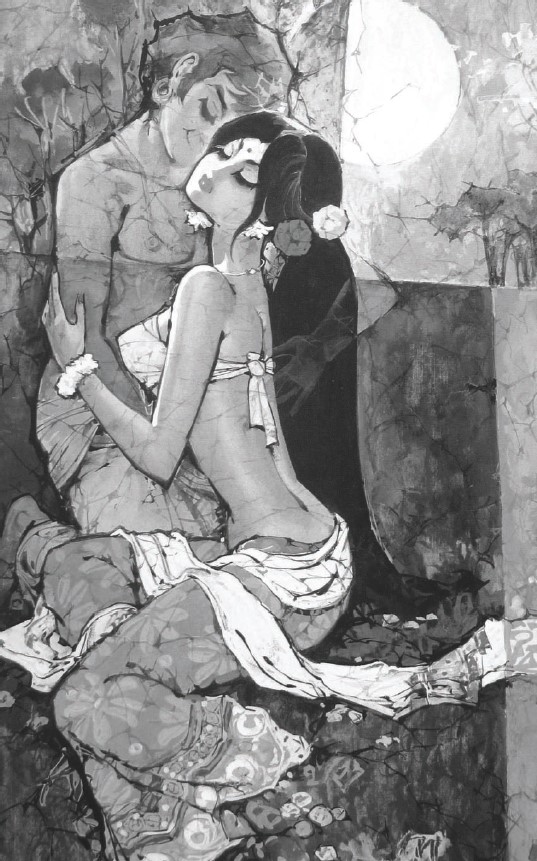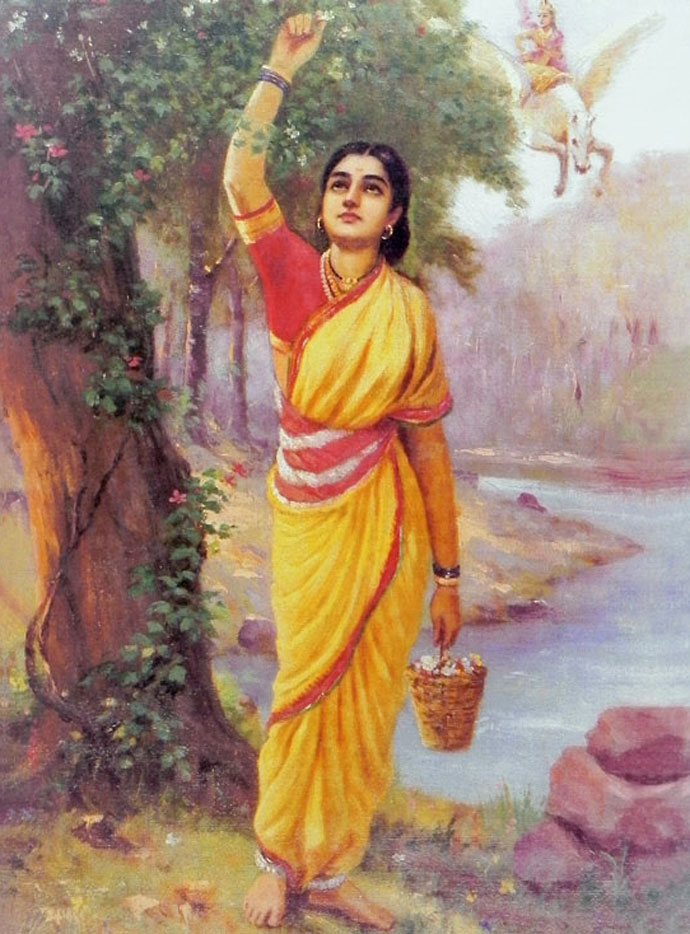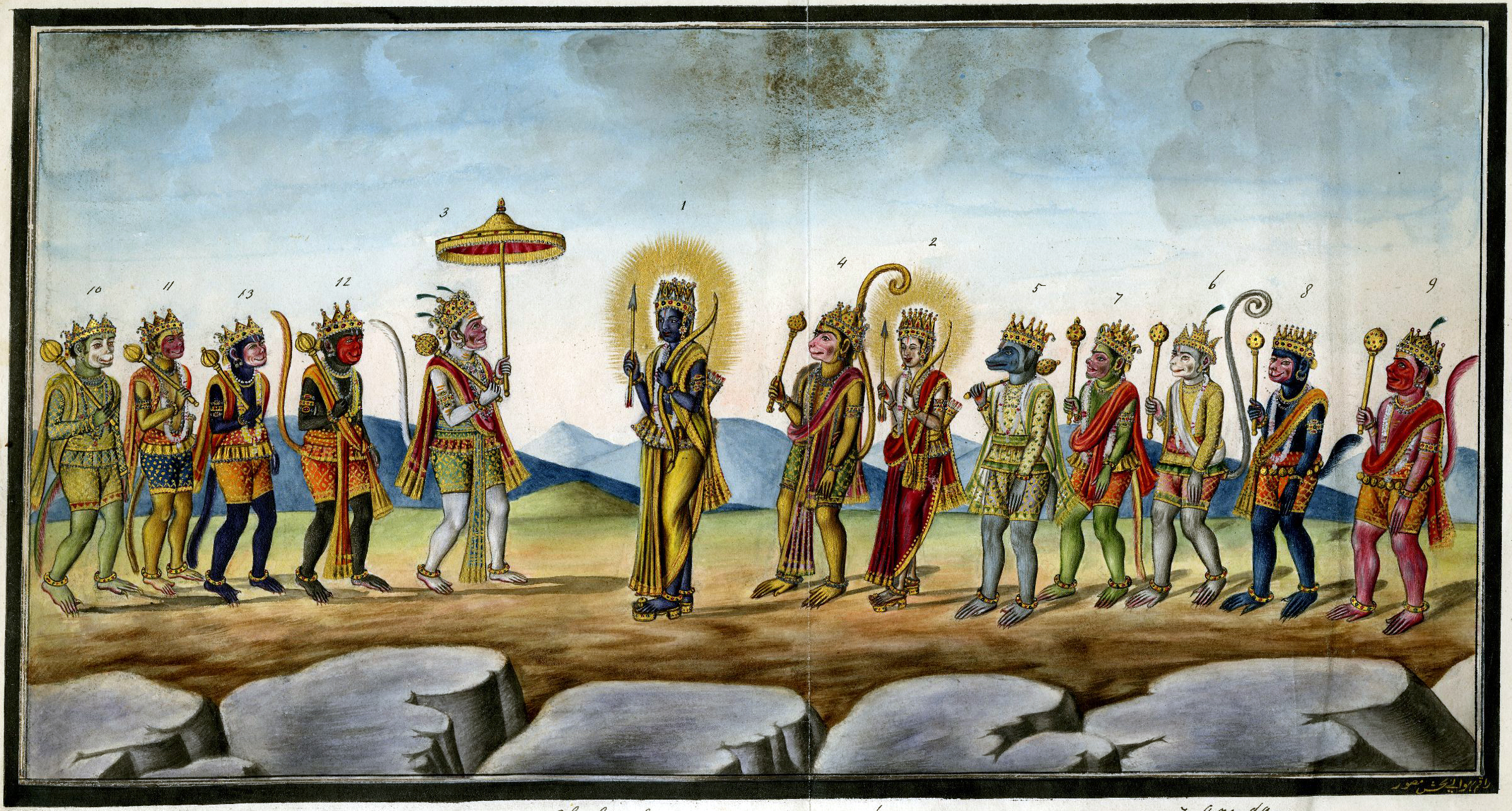|
Mahaviracharita
''Mahaviracharita'' ("Exploits of a Great Hero") is a play by the 8th-century Sanskrit playwright Bhavabhuti based on the early life of Rama, the hero of the ''Ramayana'' and venerated as a Hindu deity. It is the first play of Bhavabhuti,Mirashi p.111 thus lacking in character and style compared to his two known later works: '' Malatimadhava'' and '' Uttararamacharita''. Though currently composed of seven acts, the whole present text may not have been composed by Bhavabhuti. Structure and plot The play is composed of seven acts. Most modern scholars agree that Bhavabhuti has written the play from the beginning only to the 46th verse of Act V. According to one theory, the rest of the play is lost to time. Another theory suggests that Bhavabuti left the play incomplete after the 46th verse of Act V. However, two different extensions replace the lost material to make up seven acts. The North Indian version is composed by a poet Vinayaka and the South Indian version is attributed to Su ... [...More Info...] [...Related Items...] OR: [Wikipedia] [Google] [Baidu] |
Bhavabhuti
Bhavabhūti (Devanagari: भवभूति) was an 8th-century scholar of India noted for his plays and poetry, written in Sanskrit. His plays are considered the equal of the works of Kalidasa. Bhavabhuti was born in Padmapura, Vidarbha, in Gondia district, on Maharashtra and Madhya Pradesh border. He is described as an 'Udumbara Brahmin'. His real name was ''Srikantha Nilakantha'', and he was the son of Nilakantha and Jatukarni. He received his education at 'Padmapawaya', a place some 42 km South-West of Gwalior. Dayananidhi Paramahansa is known to be his guru. He composed his historical plays at 'Kalpi', a place on banks of river Yamuna. He is believed to have been the court poet of king Yashovarman of Kannauj. Kalhana, the 12th-century historian, places him in the entourage of the king, who was defeated by Lalitaditya Muktapida, king of Kashmir, in 736 AD. Malatimadhava The play is set in the city of Padmavati. The king desires that his minister's daughter Malati marry ... [...More Info...] [...Related Items...] OR: [Wikipedia] [Google] [Baidu] |
Ahalya
In Hinduism, Ahalyā ( sa, अहल्या, IAST: Ahalyā) also known as Ahilya, is the wife of the sage Gautama Maharishi. Many Hindu scriptures say that she was seduced by Indra (the king of gods), cursed by her husband for infidelity, and liberated from the curse by Rama (7th avatar of the god Vishnu). Created by the god Brahma as the most beautiful woman, Ahalyā was married to the much older Gautama. In the earliest full narrative, when Indra comes disguised as her husband, Ahalyā sees through his disguise but nevertheless accepts his advances. Later sources often absolve her of all guilt, describing how she falls prey to Indra's trickery. In all narratives, Ahalyā and Indra are cursed by Gautama. The curse varies from text to text, but almost all versions describe Rāma as the eventual agent of her liberation and redemption. Although early texts describe how Ahalyā must atone by undergoing severe penance while remaining invisible to the world and how she is pu ... [...More Info...] [...Related Items...] OR: [Wikipedia] [Google] [Baidu] |
Sanskrit
Sanskrit (; attributively , ; nominally , , ) is a classical language belonging to the Indo-Aryan branch of the Indo-European languages. It arose in South Asia after its predecessor languages had diffused there from the northwest in the late Bronze Age. Sanskrit is the sacred language of Hinduism, the language of classical Hindu philosophy, and of historical texts of Buddhism and Jainism. It was a link language in ancient and medieval South Asia, and upon transmission of Hindu and Buddhist culture to Southeast Asia, East Asia and Central Asia in the early medieval era, it became a language of religion and high culture, and of the political elites in some of these regions. As a result, Sanskrit had a lasting impact on the languages of South Asia, Southeast Asia and East Asia, especially in their formal and learned vocabularies. Sanskrit generally connotes several Old Indo-Aryan language varieties. The most archaic of these is the Vedic Sanskrit found in the Rig Veda, a colle ... [...More Info...] [...Related Items...] OR: [Wikipedia] [Google] [Baidu] |
Viradha
Virādha (Sanskrit: विराध, Tamil language, Tamil: ''Viratan'', Thai language, Thai: ''Phirap'', Malay language, Malay: ''Purbaita'') is minor character from the Aranya Kanda of the Valmiki Ramayana, Ramayana. He is a rakshasa living in Dandaka forest who briefly kidnaps Sita in an episode that has been described as "strongly [prefiguring Sita's] later abduction by Ravana, the central event of the book and the pivotal event of the epic." Rama and Lakshmana begin to battle the monster, but though they shoot it with many arrows, the arrows pass straight through him and leave him unharmed (Aranyakanda, Sarga 3). The monster reveals that he has a boon from Brahma which makes him invincible to weapons. So the brothers kill the rakshasa by first breaking his arms, then burying him alive in a grave. When the monsters arms are broken, he begins to praise the brothers for liberating him: he had, in a previous life, been a celestial being named Tumburu, and had been cursed by Kuber ... [...More Info...] [...Related Items...] OR: [Wikipedia] [Google] [Baidu] |
Chitrakoot Dham (Karwi)
Chitrakoot Dham, is a city and pilgrimage centre in the Chitrakoot district in the state of Uttar Pradesh, India. Chitrakoot Dham is the district headquarters and has a municipal board. Chitrakoot Dham is a city situated 12 miles west of Karwi. History Ancient History Renowned in Indian literature and sacred texts, Chitrakoot, the abode of Lord Rama, Mother Sita and Lakshmana's of Shri Ram for eleven and a half years during the exile, is capable of purifying the human heart and attracting tourists with the charm of nature. Chitrakoot is a natural place which is famous for its spiritual importance along with natural scenery. A tourist is enthralled by the beautiful waterfalls, playful young deer and dancing peacocks, while a pilgrim is enthralled by taking a dip in Payaswani/Mandakini and engrossed in the dust of Kamadgiri. Chitrakoot region has been a living center of inspiration for cosmic consciousness since ancient times. Thousands of monks, sages and sages have attaine ... [...More Info...] [...Related Items...] OR: [Wikipedia] [Google] [Baidu] |
Vibhishana
Vibhishana () is the younger brother of Ravana, the King of Lanka, in the ancient Indian epic Ramayana. Though a rakshasa himself, Vibhishana turned his back on Ravana, and defected to Rama's side, owing to his dharma. After Rama defeated Ravana, the former crowned Prince Vibhishana as the King of Lanka before returning to Ayodhya. Ramayana Prince Vibhishana is portrayed as a pious and pure of heart in the epic. After performing a penance to invoke a boon from Brahma, he begged the deity to always set his mind on the path to righteousness, and nothing more. Vibhishana was the youngest son of the rakshasi Kaikesi and the sage Vishrava, who was himself a son of the sage Pulastya, one of the Prajapati. Vibhishana was the younger brother of the King of Lanka, Ravana, and also the sibling of Kumbakarna. Even though he was born as a rakshasa, he was pious and considered himself a Brahmin, since his father was a sage. Due to Vibhishana's differences with Ravana, and because he ... [...More Info...] [...Related Items...] OR: [Wikipedia] [Google] [Baidu] |
Vali (Ramayana)
Vali ( sa, वाली, nominative singular of the stem वालिन् (''Valin'')), also known as Bali, was a king of Kishkindha in the Hindu epic Ramayana. He was the husband of Tara, the biological son of Vriksharaja, the elder brother of Sugriva, and father of Angada. He was killed by Rama, an ''avatar'' of Vishnu. Vali was invincible during the''Treta Yuga''. Vali defeated some great warriors, only because he was blessed with the ability to obtain half the strength of his opponent. Rama killed Vali by shooting him in the chest. However, during his first attempt, Rama could not recognise between Vali and Sugriva due to their resemblance. Thus, during the next attempt, Sugriva wore a garland of red flowers and went to battle with Vali. This time, Rama could recognise Vali and shot an arrow that killed him. Early life Vali was the husband of Tara. As one myth goes, fourteen types of gem or treasure were produced from the churning of the ocean during the time of Kurma ... [...More Info...] [...Related Items...] OR: [Wikipedia] [Google] [Baidu] |
Vanara
In Hindu, Vanara ( sa, वानर, , forest-dwellers) are either monkeys, apes, or a race of forest-dwelling people. In the epic the ''Ramayana'', the Vanaras help Rama defeat Ravana. They are generally depicted as humanoid apes, or human-like beings. Etymology There are three main theories about the etymology of the word "Vanara": * Aiyanar suggests that ''vanara'' means "monkey" derived from the word ''vana'' ("forest"), Literally meaning "belonging to the forest" Monier-Williams says it is probably derived from ''vanar'' (lit. "wandering in the forest") and means "forest-animal" or monkey. * Devdutt Pattanaik suggests that it derives from the words ''vana'' ("forest"), and ''nara'' ("man"), thus meaning "forest man" and suggests that they may not be monkeys, which is the general meaning. * It may be derived from the words ''vav'' and ''nara'', meaning "is it a man?" (meaning "monkey") or "perhaps he is man". Identification Although the word Vanara has come to mean ... [...More Info...] [...Related Items...] OR: [Wikipedia] [Google] [Baidu] |
Kaikeyi
Kaikeyi (Sanskrit: कैकेयी, IAST: Kaikeyī) is the second consort of King Dasharatha, and a queen of Ayodhya in the Hindu epic Ramayana. Out of Dasharatha's three wives, Kaikeyi exerts the most influence. Formerly the princess of Kekeya, she is described to have served as an able counsellor to her husband during times of war. She is the mother of Bharata. Initially loving and motherly towards her stepson, Prince Rama, Kaikeyi's mind is poisoned by Manthara, her maid. Under her influence, Rama is exiled to the forest for a period of fourteen years. Legend Birth and early life Kaikeyi is born to King Ashvapati of Kekeya shortly before her mother was exiled. She was raised with her only mother figure being her hunchbacked nursemaid, Manthara. She is raised with seven brothers, including her twin, Yudhājit. Boons In a battle between the devas and the asuras, Dasharatha rode to Devaloka, accompanied by Kaikeyi, to help Indra fight against the asuras. The deva ... [...More Info...] [...Related Items...] OR: [Wikipedia] [Google] [Baidu] |
Manthara
''Manthara'' ( sa, मन्थरा; lit: "humpbacked") in the Hindu epic ''Ramayana'' convinced Queen Kaikeyi that the throne of maharaja belonged to her son Bharata and that her step-son—crown-prince Rama (the hero of the ''Ramayana'')—should be exiled from the kingdom. She was like a mother figure to Kaikeyi and her twin Yuddhajit, for their mother was banished. She accompanied Kaikeyi to Ayodhya after her marriage to Dasharatha. Influence on Kaikeyi As family servant of Kaikeyi, Manthara lived with her from the time of her birth. When she hears that King Dasharatha is planning to make his eldest son, Rama, prince regent (rather than Bharata, his child by Kaikeyi), she flies into a rage and reports the news to Kaikeyi. Kaikeyi is initially pleased and hands Manthara a pearl necklace. Manthara reminds Kaikeyi of the two boons Dasharatha had given her when she had once saved his life in a celestial battle. Kaikeyi had kept these boons for later and Manthara declares t ... [...More Info...] [...Related Items...] OR: [Wikipedia] [Google] [Baidu] |
Vimana
Vimāna are mythological flying palaces or chariots described in Hindu texts and Sanskrit epics. The "Pushpaka Vimana" of Ravana (who took it from Kubera; Rama returned it to Kubera) is the most quoted example of a vimana. Vimanas are also mentioned in Jain texts. Etymology The Sanskrit word ''vimāna'' (विमान) literally means "measuring out, traversing" or "having been measured out". Monier Monier-Williams defines ''vimāna'' as "a car or a chariot of the gods, any self-moving aerial car sometimes serving as a seat or throne, sometimes self-moving and carrying its occupant through the air; other descriptions make the Vimana more like a house or palace, and one kind is said to be seven stories high", and quotes the Pushpaka Vimana of Ravana as an example. It may denote any car or vehicle, especially a bier or a ship as well as a palace of an emperor, especially with seven stories. Nowadays, ''vimāna, vimān'' or ''biman'' means "aircraft" in Indian languages. For exa ... [...More Info...] [...Related Items...] OR: [Wikipedia] [Google] [Baidu] |
Vashishtha
Vasishtha ( sa, वसिष्ठ, IAST: ') is one of the oldest and most revered Vedic rishis or sages, and one of the Saptarishis (seven great Rishis). Vashistha is credited as the chief author of Mandala 7 of the ''Rigveda''. Vashishtha and his family are mentioned in Rigvedic verse 10.167.4, other Rigvedic mandalas and in many Vedic texts. His ideas have been influential and he was called the first sage of the Vedanta school of Hindu philosophy by Adi Shankara. The '' Yoga Vasishtha'', ''Vasishtha Samhita'', as well as some versions of the ''Agni Purana'' and ''Vishnu Purana'' are attributed to him. He is the subject of many stories, such as him being in possession of the divine cow Kamadhenu and Nandini her child, who could grant anything to their owners. He is famous in Hindu stories for his legendary conflicts with sage Vishvamitra. In the Ramayana, he was the family priest of the Raghu dynasty and teacher of Rama and his brothers. Etymology Vasishtha is also spelled ... [...More Info...] [...Related Items...] OR: [Wikipedia] [Google] [Baidu] |








.jpg)
